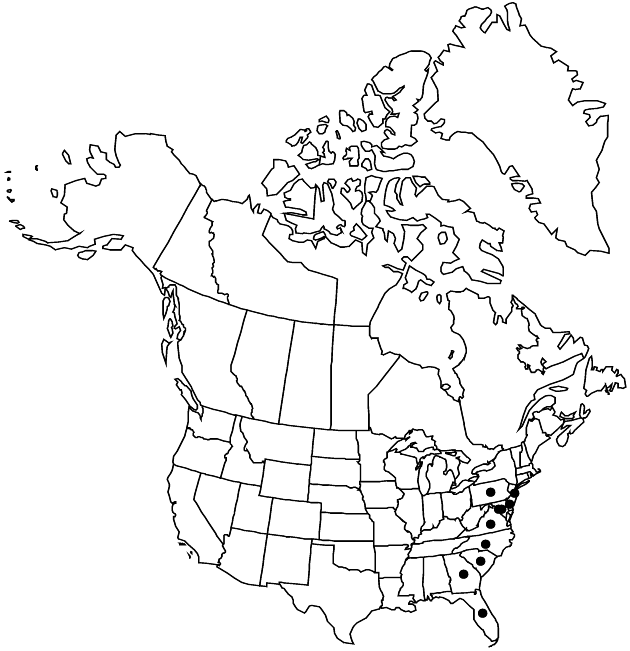Arnica acaulis
Prelim. Cat., 30. 1888.
Common names: Common leopardbane
Endemic
Basionym: Doronicum acaule Walter Fl. Carol., 205. 1788
Revision as of 22:57, 29 July 2020 by imported>Volume Importer
Plants 20–80 cm. Stems simple. Leaves 2–4 (–6) pairs, nearly all basal; sessile; blades (with 3, 5, or 7 prominent, subparallel veins) broadly elliptic, ovate, or rhombic, 4–15 × 1.5–8 cm, margins mostly entire, apices mostly obtuse, faces hirsute and stipitate-glandular (cauline leaves 0 or 1–2, distalmost often alternate, much reduced). Heads 3–20. Involucres campanulate. Phyllaries 12–18, narrowly ovate. Ray-florets 10–16; corollas yellow. Disc-florets: corollas yellow; anthers yellow. Cypselae dark gray to dark-brown, 5–7 mm, glabrous or sparsely stipitate-glandular; pappi white, bristles barbellate. 2n = 38.
Phenology: Flowering Apr–Jun.
Habitat: Sandy pine woods and clearings, often in damp soils, chiefly on Coastal Plain
Elevation: 0–300 m
Distribution

Del., D.C., Fla., Ga., Md., N.J., N.C., Pa., S.C., Va.
Discussion
Selected References
None.
Lower Taxa
None.
... more about "Arnica acaulis"
yellow +
introrse +
connate +
herbaceous +
obtuse +
scarious +
absent +
hirsute +
papillate +
continuous +
decurrent +
rhombic;ovate;rhombic;ovate;elliptic +
winged;ribbed;winged;ribbed +
1;15 +
stigmatic +
barbellate +
6;80 +
absent +
Common leopardbane +
zygomorphic +
yellow +
monomorphic +
dimorphic +
5mm;7mm +
staminate +
straight +
scabrellous +
distinct +
proximal +
1;5 +
bisexual +
dispersed +
singly +
discoid +
indeterminate +
3;20 +
surrounding +
campanulate +
sessile +
opposite +
deltate +
2-carpellate +
inferior +
attached +
anatropous +
white +
persistent +
fragile +
falling +
aristate +
fine +
tough +
thick +
absent +
connate +
persistent +
distinct +
falling +
unequal +
Prelim. Cat., +
1888 +
pistillate +
absent +
fertile +
epaleate +
convex +
fibrous +
distinct +
exalbuminous +
modifed +
Endemic +
alternate +
simple +
erect +
2-branched +
papillate +
Arnica acaulis +
Arnica +
species +
shorter +
longer +
perennial +